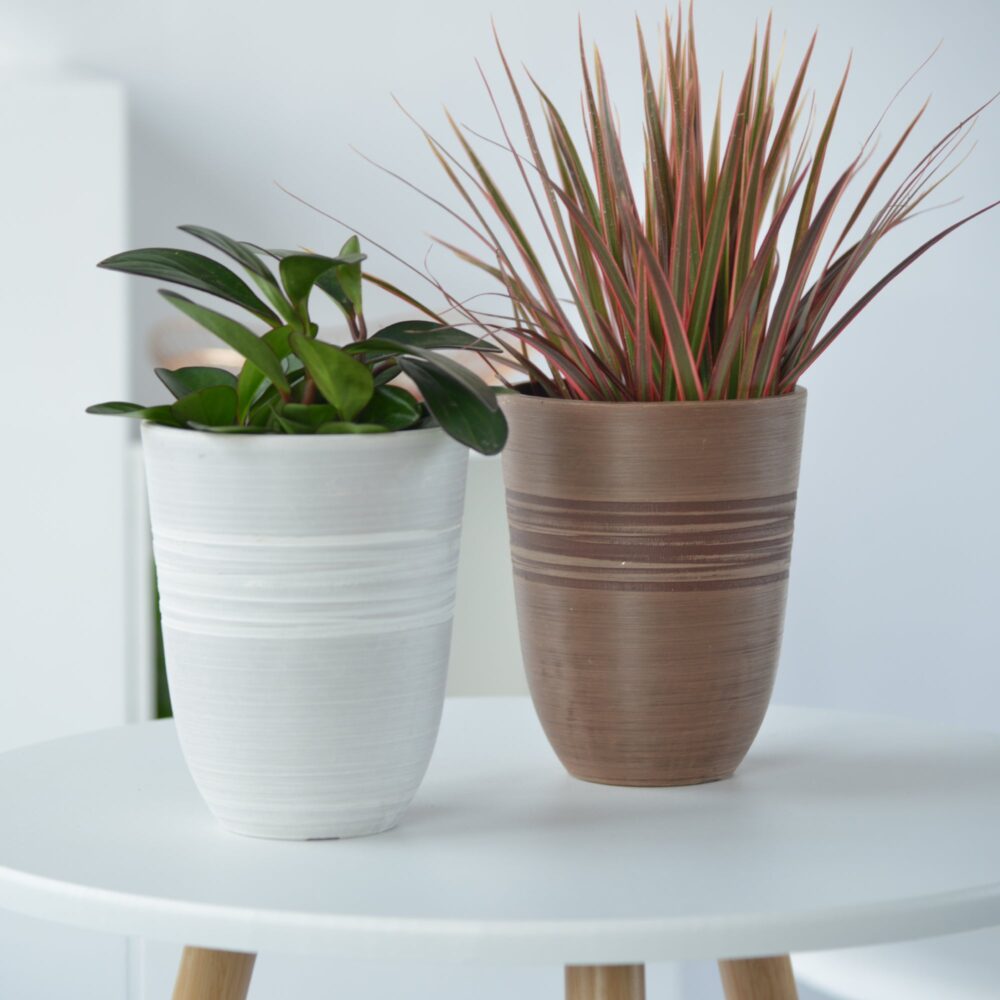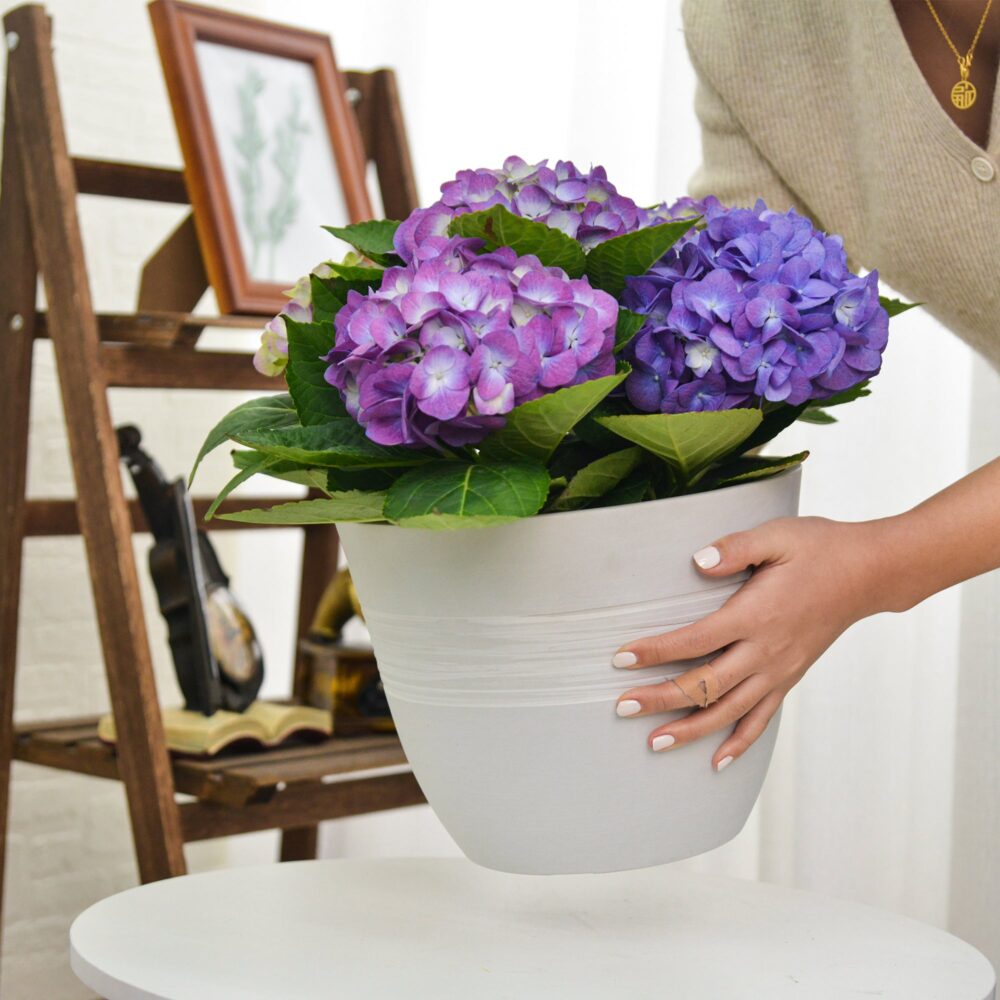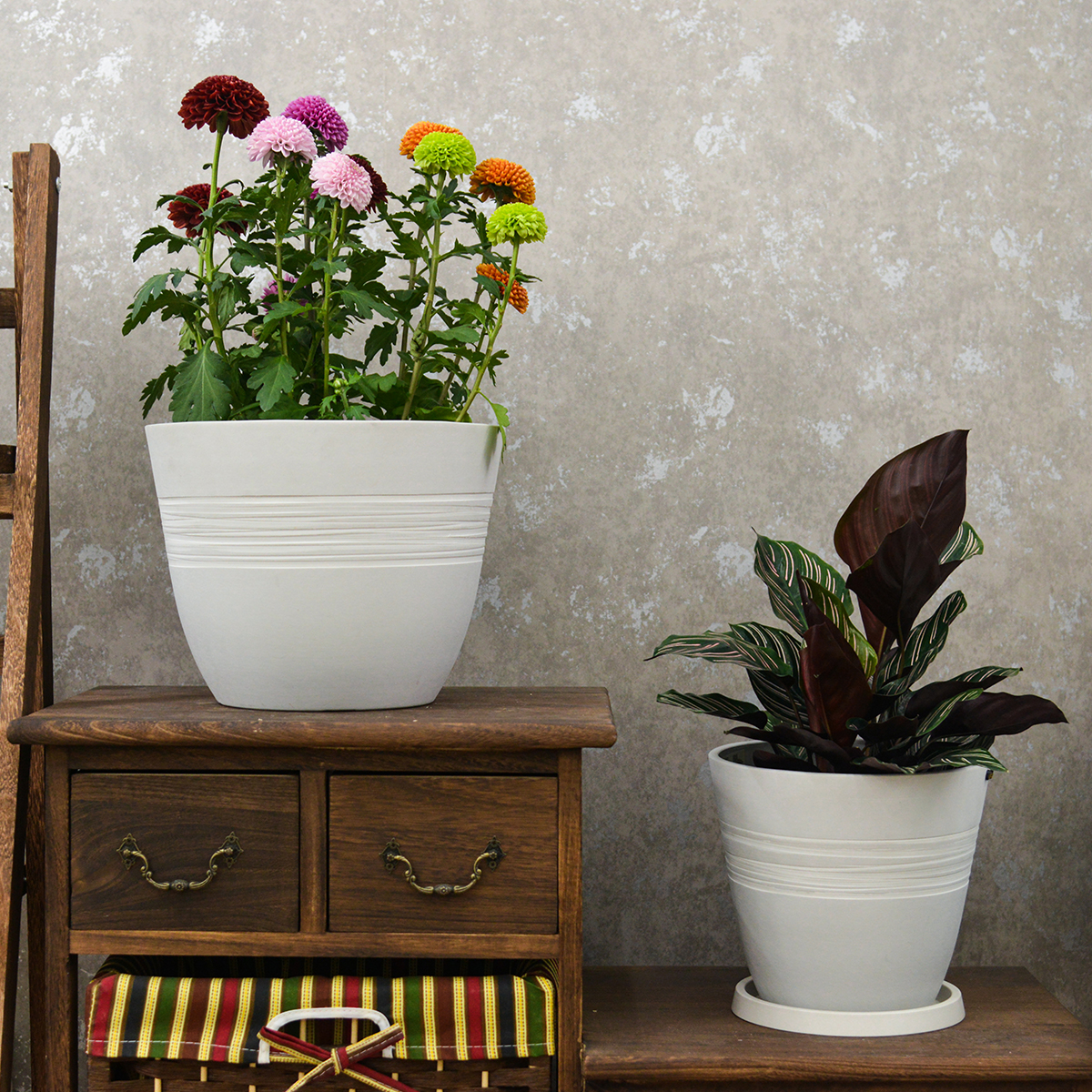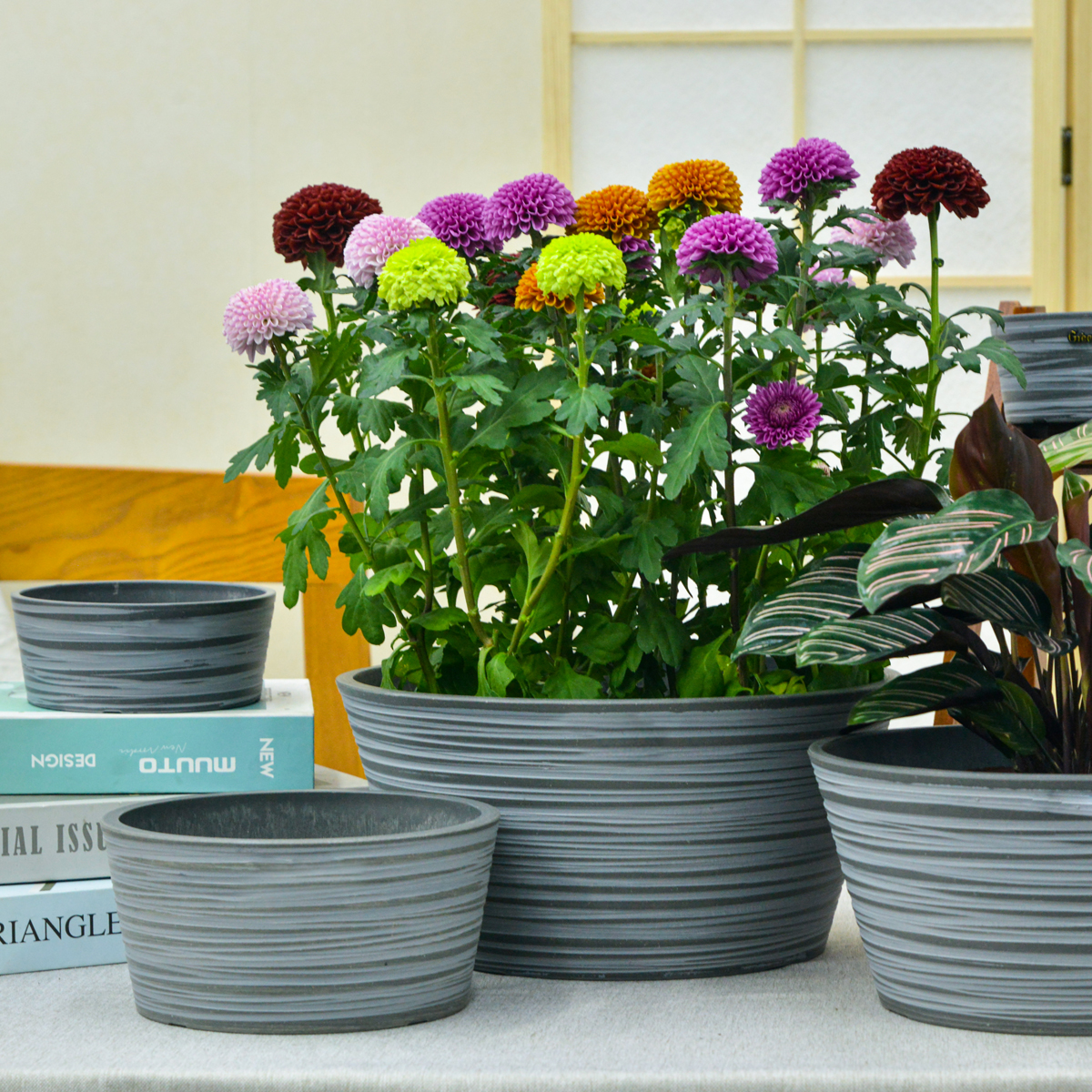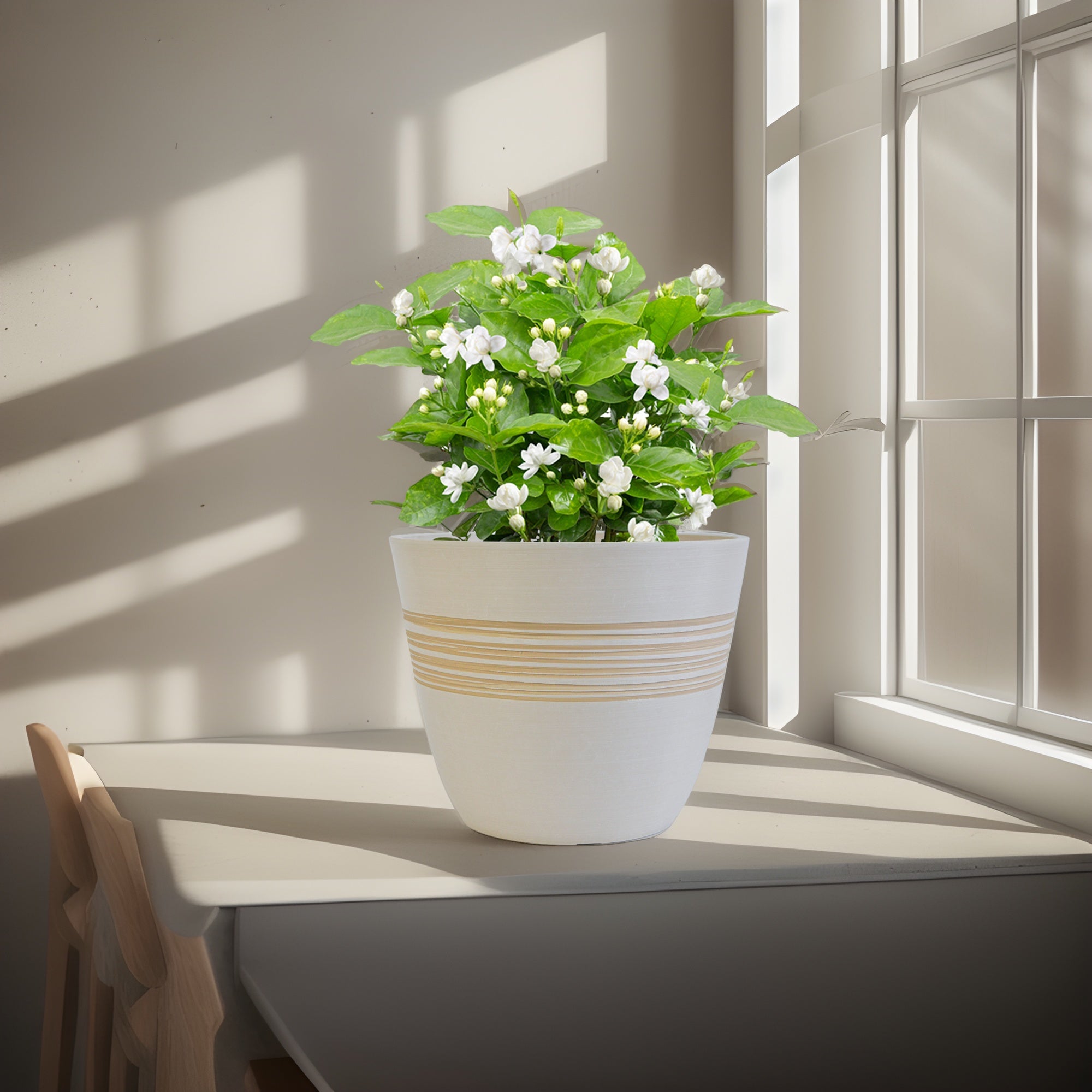Ornamental Grasses in Pots: Container Gardening for Year-Round Beauty
Ornamental grasses are versatile and low-maintenance plants that add texture, movement, and year-round interest to gardens. Growing ornamental grasses in containers is an excellent way to showcase their beauty on patios, balconies, decks, or to add vertical accents to garden beds. Container gardening offers flexibility and allows you to tailor growing conditions to suit different grass varieties.
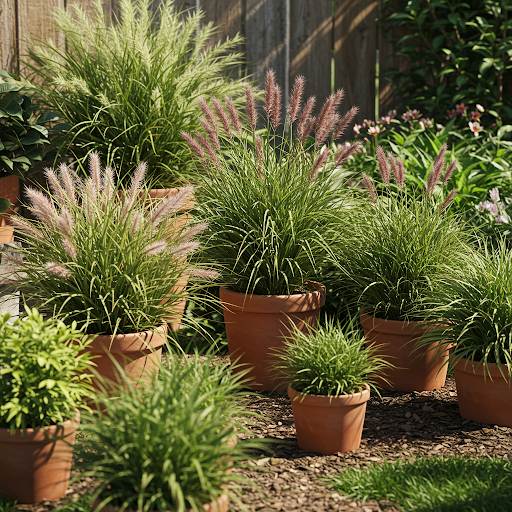
Ornamental grasses
Key Features of Ornamental Grasses:
- Foliage: Ornamental grasses are primarily grown for their attractive foliage, which comes in a wide range of colors, textures, and forms. Leaf blades can be fine and delicate, broad and bold, or cascading and arching. Foliage colors include shades of green, blue, silver, gold, bronze, red, and variegated stripes.
- Flowers/Seed Heads: Many ornamental grasses produce attractive flower plumes or seed heads that add further visual interest, often extending into fall and winter. These seed heads can be feathery, bottlebrush-like, or spiky, and come in various colors from silvery white to pink and bronze.
- Types: There is a vast array of ornamental grasses suitable for container gardening. Some popular types include:
- Fountain Grass (Pennisetum alopecuroides): Classic choice with soft, bottlebrush-like plumes. Dwarf varieties like ‘Little Bunny’ and ‘Hameln’ are ideal for pots.
- Japanese Blood Grass (Imperata cylindrica ‘Rubra’): Striking red-tipped blades that intensify in color throughout the season. Relatively compact.
- Blue Fescue (Festuca glauca): Clump-forming grass with fine, blue-gray foliage. ‘Elijah Blue’ and ‘Beyond Blue’ are popular dwarf varieties.
- Feather Reed Grass (Calamagrostis x acutiflora): Upright and stately with feathery plumes. ‘Karl Foerster’ is a widely grown, though taller, variety that can work in large containers. Dwarf varieties like ‘Avalanche’ are better suited for pots.
- Japanese Forest Grass (Hakonechloa macra): Elegant, shade-tolerant grass with cascading foliage. ‘Aureola’ (golden variegated) and ‘All Gold’ are beautiful container choices.
- Sedge (Carex): While technically sedges, they are grass-like and offer diverse foliage textures and colors, including variegated and bronze varieties. Carex oshimensis ‘Evergold’ and Carex comans ‘Bronze Form’ are good container options.
- Size: Ornamental grass size varies dramatically, from dwarf varieties under 1 foot tall to giants reaching 8 feet or more. For container gardening, choose dwarf or medium-sized varieties that will remain in proportion to the pot and your space.
- Hardiness: Hardiness varies by species and cultivar. Many ornamental grasses are very hardy (zones 4-9), while some are tender perennials (zones 8-11) and treated as annuals in colder climates. Choose grasses suited to your local hardiness zone for perennial container displays.
- Maintenance: Ornamental grasses are generally low-maintenance, especially once established. They are relatively drought-tolerant, pest and disease-resistant, and require minimal fertilization. Annual pruning is typically the main maintenance task.
Growing Ornamental Grasses in Pots at Home:
1. Choosing the Right Pot:
- Material:
- Plastic Pots: Lightweight, affordable, retain moisture well, and come in a wide variety of sizes and styles. Dark colors can help warm the soil. Ensure good drainage.
- Resin or Composite Pots: Durable, lighter than terracotta, good insulation, and moisture retention. Offer decorative options. Ensure drainage holes.
- Terracotta or Clay Pots: Provide excellent drainage and aeration, and are aesthetically pleasing. Can be heavier and dry out faster, requiring more frequent watering. Unglazed terracotta is more breathable than glazed.
- Metal Containers: Can create a modern look. Metal can heat up in full sun, potentially drying out soil faster. Ensure good drainage and consider lighter colors or shade in hot climates.
- Size: Select a pot that is appropriately sized for the mature size of the ornamental grass variety.
- Dwarf Grasses (under 2 feet): Start with pots that are at least 10-12 inches in diameter and depth.
- Medium Grasses (2-4 feet): Use pots that are 14-18 inches or larger in diameter and depth.
- Larger Grasses (over 4 feet): Use very large containers, 20 inches or more in diameter and depth, or consider half whiskey barrels or large tubs.
- Clumping vs. Spreading: Clumping grasses generally need pots that match their mature width. Spreading grasses (rhizomatous) may need larger pots to accommodate their spreading habit, or choose clump-forming varieties for containers.
- Drainage: Good drainage is crucial for most ornamental grasses. Ensure the pot has ample drainage holes. You can add a layer of gravel or pot shards at the bottom of the pot to improve drainage, especially in heavier containers or for grasses that prefer drier conditions.
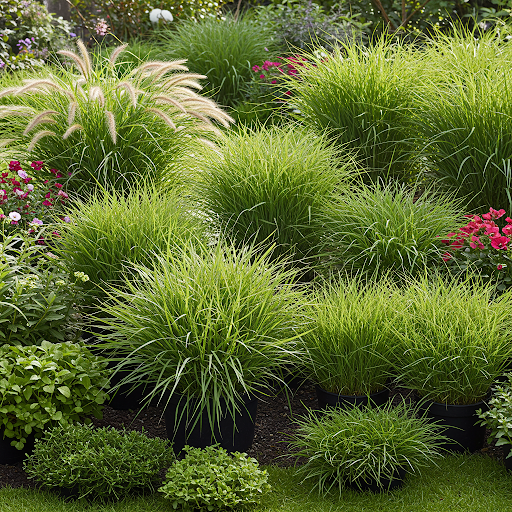
Ornamental grasses
2. Planting:
- When to Plant: Spring or early fall are the best times to plant ornamental grasses in containers. Spring planting allows for a full growing season to establish.
- Potting Mix: Use a well-draining potting mix. Most ornamental grasses are not overly demanding about soil fertility. A general-purpose potting mix amended with some compost or other organic matter is usually sufficient. Avoid heavy, water-retentive mixes. For grasses that prefer drier conditions (like Blue Fescue), you can add perlite or sand to improve drainage.
- Planting Process:
- Fill the pot partially with potting mix.
- Gently remove the ornamental grass from its nursery container, and loosen any circling roots if pot-bound.
- Place the grass in the pot, ensuring the top of the root ball is level with the potting mix surface.
- Backfill around the root ball with potting mix, gently firming it.
- Water thoroughly to settle the soil.
- Apply a layer of mulch (such as bark chips, gravel, or pebbles) around the base to help retain moisture, suppress weeds, and provide a finished look.
3. Care:
- Sunlight: Sunlight requirements vary by grass type:
- Full Sun Grasses: Most ornamental grasses thrive in full sun (at least 6-8 hours of direct sunlight per day). Examples include Fountain Grass, Feather Reed Grass, Blue Fescue, Japanese Blood Grass. Full sun promotes best foliage color and flower plume production.
- Partial Shade Grasses: Some grasses, like Japanese Forest Grass and some sedges, tolerate or even prefer partial shade, especially in hot climates.
- Check Variety Needs: Always check the specific sunlight needs of the ornamental grass variety you are growing.
- Watering: Once established, most ornamental grasses are relatively drought-tolerant, especially when planted in the ground. However, container-grown grasses will dry out faster and require more regular watering, especially during hot, dry periods.
- Water deeply when the top inch of soil feels dry. Avoid overwatering, which can lead to root rot, especially in grasses that prefer drier conditions.
- Allow the soil to dry slightly between waterings for most grasses.
- Water more frequently in hot, sunny weather and less frequently in cooler, cloudier conditions.
- Winter Watering: For evergreen grasses in containers in winter, water sparingly during dry spells to prevent complete soil desiccation, especially in regions with dry winters.
- Fertilizing: Ornamental grasses are generally low-fertilizer plants. Over-fertilizing can lead to weak, floppy growth.
- Light Fertilizing in Spring: Apply a light application of a balanced slow-release fertilizer in early spring as new growth begins.
- Avoid Over-Fertilizing: Generally, additional fertilization is not needed during the growing season.
- Pruning: Pruning depends on the type of grass and your desired look:
- Cool-Season Grasses (e.g., Blue Fescue, Sedge): Evergreen or semi-evergreen. Lightly groom in late winter or early spring to remove dead or brown tips. Avoid cutting back hard.
- Warm-Season Grasses (e.g., Fountain Grass, Feather Reed Grass, Japanese Blood Grass): Foliage dies back in winter (in colder zones). Prune back foliage to a few inches above the soil level in late winter or early spring before new growth emerges. You can also leave seed heads for winter interest and prune in early spring.
- Deadheading: You can remove spent flower plumes if desired for a tidier look, but many people leave them for fall and winter interest.
- Dividing (Every few years): Clump-forming ornamental grasses may eventually become overcrowded in containers. Divide clumps every 3-4 years in spring to rejuvenate plants and prevent them from becoming root-bound.
- Overwintering: Winter care depends on the hardiness of the grass and your climate:
- Hardy Grasses (Zones 4-7 or colder): Many hardy grasses can overwinter in containers outdoors in these zones. In very cold regions or for less hardy varieties, provide extra winter protection by:
- Moving pots to a sheltered location: Unheated garage, shed, or against a building foundation.
- Insulating pots: Wrap containers with burlap, bubble wrap, or blankets. Mulch the soil surface.
- Watering sparingly during winter dry spells.
- Tender Grasses (Zones 8-11): In colder zones, treat as annuals or bring containers indoors to a cool, bright location for overwintering. Water sparingly during dormancy.
- Hardy Grasses (Zones 4-7 or colder): Many hardy grasses can overwinter in containers outdoors in these zones. In very cold regions or for less hardy varieties, provide extra winter protection by:
4. Benefits of Growing Ornamental Grasses in Pots:
- Year-Round Interest: Provides foliage texture and color throughout the growing season, and many offer attractive seed heads in fall and winter. Evergreen varieties provide year-round greenery.
- Vertical Accents and Structure: Adds height, vertical lines, and architectural interest to container arrangements and garden spaces.
- Movement and Sound: Grasses sway gracefully in the breeze, adding motion and soft rustling sounds to the garden.
- Low Maintenance: Once established, container ornamental grasses are relatively easy to care for, requiring minimal watering, fertilizing, and pest control.
- Versatility: Works well as standalone specimens in containers, as thrillers in mixed container plantings, or grouped together for massed displays.
- Deer Resistant: Most ornamental grasses are deer-resistant.
- Drought Tolerant (once established): Water-wise choice for container gardening, especially for xeric or Mediterranean-style gardens.
5. Potential Problems with Container Ornamental Grasses:
- Drying Out Quickly: Containers dry out faster than garden beds, requiring more attentive watering, especially in summer and for grasses that prefer moist conditions.
- Overwintering Needs (for less hardy varieties): Tender grasses will need to be overwintered indoors in colder climates, and even hardy grasses may benefit from some winter protection in containers in very cold zones.
- Pot Stability (for tall grasses): Taller grasses in pots can become top-heavy and may need staking or a sheltered location to prevent them from toppling in strong winds.
- Root-Bound Conditions: Clump-forming grasses can become root-bound in containers over time, necessitating division and repotting every few years.
Authoritative Sources:
- Wikipedia – Ornamental Grass: https://en.wikipedia.org/wiki/Ornamental_grass (General information about ornamental grasses)
In Summary:
Growing ornamental grasses in containers is a wonderful way to add texture, movement, and year-round beauty to your home and garden. By selecting appropriate varieties, choosing the right pots, and providing basic care, you can easily create stunning container displays with these low-maintenance and visually appealing plants.
Plant Pots 6 inch 8 inch 10 inch for Indoor Plants, Set of 3 Modern Decorative Planter ts with Drainage Hole, Decorative Flower Pots
By greenship-seo|2025-04-10T06:39:28+00:00January 14, 2025|Categories: Hand-carving Series|Tags: Decorative Flower Pots|
Planter for Indoor Outdoor Plants, Set of 2 Modern Decorative Plant Pots with Drainage Hole, Decorative Flower Pots
By greenship-seo|2025-01-14T12:26:44+00:00January 14, 2025|Categories: Hand-carving Series|Tags: Decorative Flower Pots|
Plant Pots 6 inch 8 inch 12 inch for Indoor Outdoor Plants, Set of 3 Modern Decorative Planter with Drainage Hole, Decorative Flower Pots
By greenship-seo|2025-04-10T06:38:40+00:00January 16, 2025|Categories: Hand-carving Series|Tags: Decorative Flower Pots|
KC2-11V
By greenship|2024-08-16T05:39:50+00:00August 16, 2024|Categories: Hand-carving Series|
11THD
By greenship|2024-08-13T02:52:20+00:00August 13, 2024|Categories: Hand-carving Series|
Planter for Indoor Outdoor Plants, Set of 2 Modern Decorative Plant Pots with Drainage Hole, Decorative Flower Pots
By greenship-seo|2025-04-10T07:46:01+00:00January 9, 2025|Categories: Hand-carving Series|Tags: Decorative Flower Pots, Self-Watering Pots|

